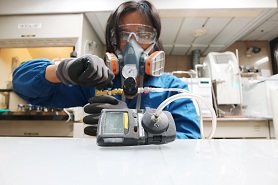
Gas detectors are a vital safety measure in various industries from mechanical to pharmaceutical and chemical manufacturing. Keep reading to learn about the recent advancements in gas detection technology and remain.
How Gas Detectors Work
A single gas detector reveals the concentration of gases in the air by using various technologies. Gas detectors work by indicating elevated levels of gases through a series of audio or visual means such as lights or alarms. Certain detectors may be used as individual units to measure small areas or can also be combined to generate a protection system. As the detectors evaluate the levels of gas, the sensor response acts as a point of reference. When the sensor’s response goes beyond a certain level, an alarm will activate to alert you.
How Toxic Gases Are Measured
– Electrochemical Sensors:
These are primarily used to detect toxic gases such as nitrogen oxides and carbon monoxide. These types of detectors are sensitive and will issue warning signs through electrical currents.
– Metal Oxide Semiconductors:
These operate through a sensitive film that is comprised of tungsten oxides. The film reacts with gases which trigger the unit when there are toxic levels. Metal oxide sensors are effective because of their capability to work in low-humidity ranges. They can also detect a wide range of gases including combustibles.
How Combustible Gases Are Measured
– Infrared Sensors or IR Detectors:
These operate through a system of transmitters and receivers to pick up on combustible gases. The receivers are light detectors, and the transmitters are light sources. If there is a gas in the area, then it will interfere with the power of the light transmission between the receiver and the transmitter.
– Catalytic Sensors:
This method uses catalytic oxidation that detects combustible gases. The sensors are comprised of a platinum treated wire coil. When the combustible gas is in contact with the catalytic surface, it becomes oxidized, and the wiring resistance is altered by the heat that is released.
– LEL Gas Detector:
A LEL gas detector is a device used to detect dangerous levels of combustible gas or vapor in the air. A LEL detector is typically utilized wherever a solvent or combustible gas is stored such as chemical plants and industrial manufacturing facilities.
– GasSecure GS01:
A GasSecure GS01 is a wireless infrared CO2 gas detector which blends a single-beam of triple-wavelength infrared technology with very low power consumption. The gas detector has a two-year battery life, and the maintenance impacts are in-sync with other gas detection technologies.






